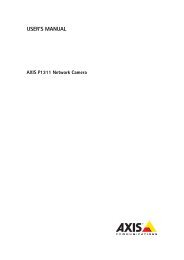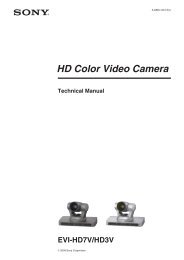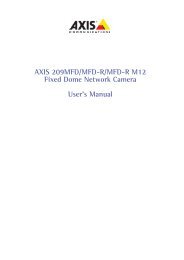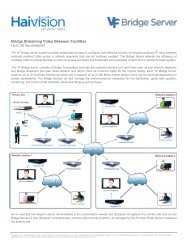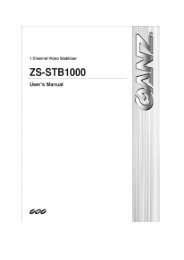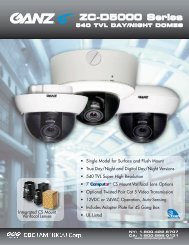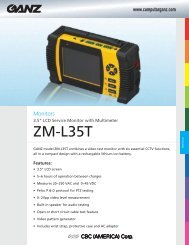AXIS 231D+/232D+ Network Dome Camera User's Manual
AXIS 231D+/232D+ Network Dome Camera User's Manual
AXIS 231D+/232D+ Network Dome Camera User's Manual
Create successful ePaper yourself
Turn your PDF publications into a flip-book with our unique Google optimized e-Paper software.
<strong>AXIS</strong> <strong>231D+</strong>/<strong>232D+</strong> - System Options37802.1X - <strong>Network</strong> Admission ControlIEEE 802.1X is an IEEE standard for port-based <strong>Network</strong> Admission Control. It providesauthentication to devices attached to a network port (wired or wireless), establishing apoint-to-point connection, or, if authentication fails, preventing access on that port.802.1X is based on EAP (Extensible Authentication Protocol).In a 802.1X enabled network switch, clients equipped with the correct software can beauthenticated and allowed or denied network access at the Ethernet level.Clients and servers in an 802.1X network may need to authenticate each other by somemeans. This is done with the help of digital certificates provided by a CertificationAuthority. These are then validated by a third-party entity, such as a RADIUS server,examples of which are Free Radius and Microsoft Internet Authentication Service.To perform the authentication, the RADIUS server uses various EAP methods/protocols, ofwhich there are many. The one used in the Axis implementation is EAP-TLS(EAP-Transport Layer Security).The <strong>AXIS</strong> network video device presents its certificate to the network switch, which in turnforwards this to the RADIUS server. The RADIUS server validates or rejects the certificateand responds to the switch, and sends its own certificate to the client for validation. Theswitch then allows or denies network access accordingly, on a preconfigured port.The authentication processRADIUSRADIUS (Remote Authentication Dial In User Service) is an AAA (Authentication,Authorization and Accounting) protocol for applications such as network access or IPmobility. It is intended to work in both local and roaming situations.CA serversIn cryptography, a Certification Authority (CA) is an entity that provides signed digitalcertificates for use by other parties, and thus acts a trusted third party.There are many commercial CAs that charge for their services. Institutions andgovernments may have their own CA, and there are free CAs available.Date & TimeCurrent Server Time - displays the current date and time (24h clock). The time can bedisplayed in 12h clock format in the Overlay Images (see below).New Server Time - Select your time zone from the drop-down list and check the daylightsaving time changes, if desired.




